XMAS IN DENMARK

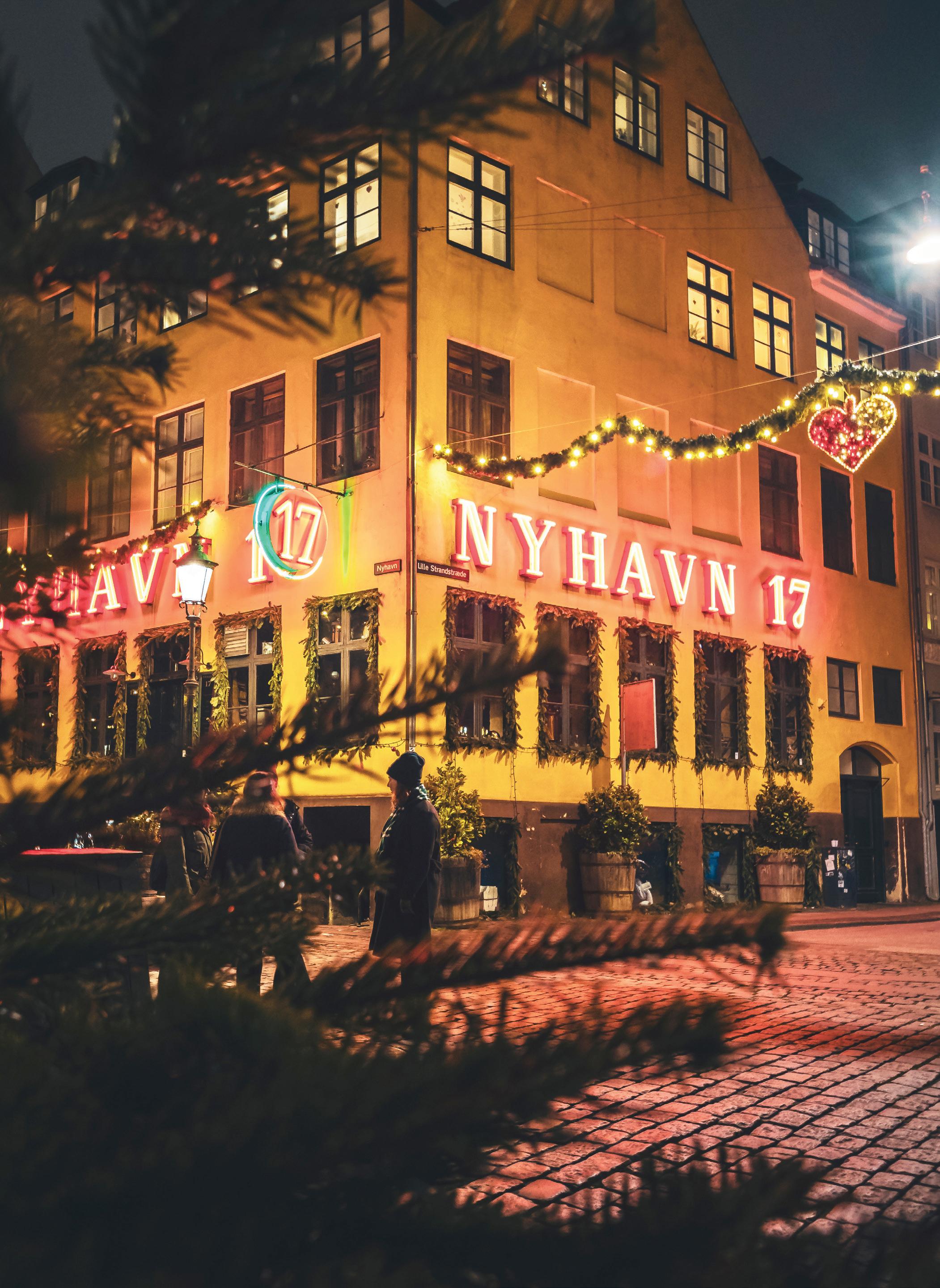
2022 GUIDE
VISITDENMARK/ DANIEL VILLADSEN
HAMILTON
The supermarkets had an early Christmas by merging the festive period with the 2022 World Cup – capitalising on the happy fortune that Denmark’s principal colours are the ones most worn by Santa himself. Supermarkets in Cameroon have Coca-Cola to blame for missing out on that bonanza.
And it helped that they faced no competition from the o cial merchandisers, to whom Christmas is the celebration of a minor prophet. They were free to remodel baubles as footballs on woolly hats for the ladies and make Santa klaphats for the men – kitschy additions to the red and white worn by thousands of adoring, and a little more self-respecting, fans.

And just because Denmark crashed out in the group stage – to a country that barely knows how to celebrate Christmas – doesn’t mean the Danes need to bin all that clever marketing. Klaphats can be upcycled to
give to your favourite angel and the football baubles … just cut them off and throw them away.
Who can save our sins this time?
As somebody well versed in throwing it all away once said: “So this is Christmas.” And now you mention it, there is something poignant about that remark: like it’s a huge crashing disappointment after so much fuss and hype.
In the case of 2022, the festive holiday period will be the most anticlimactic ever, coming one week after the culmination of the World Cup – or at least for most men.
Seriously, who will be able to stomach another glass of glögg after all the grog that’s gone straight into our gullets. Who will have the lungs for carols after screaming at the television set four hours a day for weeks on end? And who has the body fat to survive the eternity in the doghouse that now beckons?
Pavorotti’s the only answer I can come up with to die for our sins. But he’s already as dead as Jesus.
Good omen for team in white That’s the fella … I’d almost forgotten his name. Not Messi-ah or Christ-iano, but Jesus Christ our saviour/ who was born on Christmas Day/ to save us all from Satan’s pow’r – it’s a sad indictment of the world today that most of our Bible knowledge stems from festive songs.
But through football, we can learn. Like did you know that St Lucia’s Day will be clashing with the rst semi- nal? Surely a good omen for the team playing in white (England will contest the second if they win on Saturday, sadly one of the few dates that isn’t an anniversary of the French losing a battle).
While the nal is the anniversary of the death of our most sacred mother of divinity Kirsty MacColl – a life story that will continue touching hearts, okay maybe not as long as Jesus,
but her Xmas song is indisputably better than any of the homages paid to his manger, or manager, over the years.
The most unique Xmas ever So what’s left for Denmark after Qatar? Christmas, of course, and this special edition has the entire backstory and entire festive smorgasbord for you to devour.
Learn about the pagan history of the festive holiday (pages 6-7), the songs the Danes favour, both in church and whilst dancing around the Christmas tree (4-5), what they like to do in the evenings during December (mostly 5 & 7) and how they celebrate the big day, December 24 (again 7).
Finally, on page 8, we instruct you how to make a Danish Christmas tree, klejner biscuits, a Danish Christmas heart and the classic dessert Ris à l’amande.
No World Cup gimmicks … just the unique Danish Christmas envied all over the world.

CHRISTMAS 2022 GUIDE 2 INTRODUCTION
BEN
VISIT DENMARK/ DANIEL BRANDT ANDERSEN
CHRISTIANO! FIND YOUR OWN FEAST DAY!
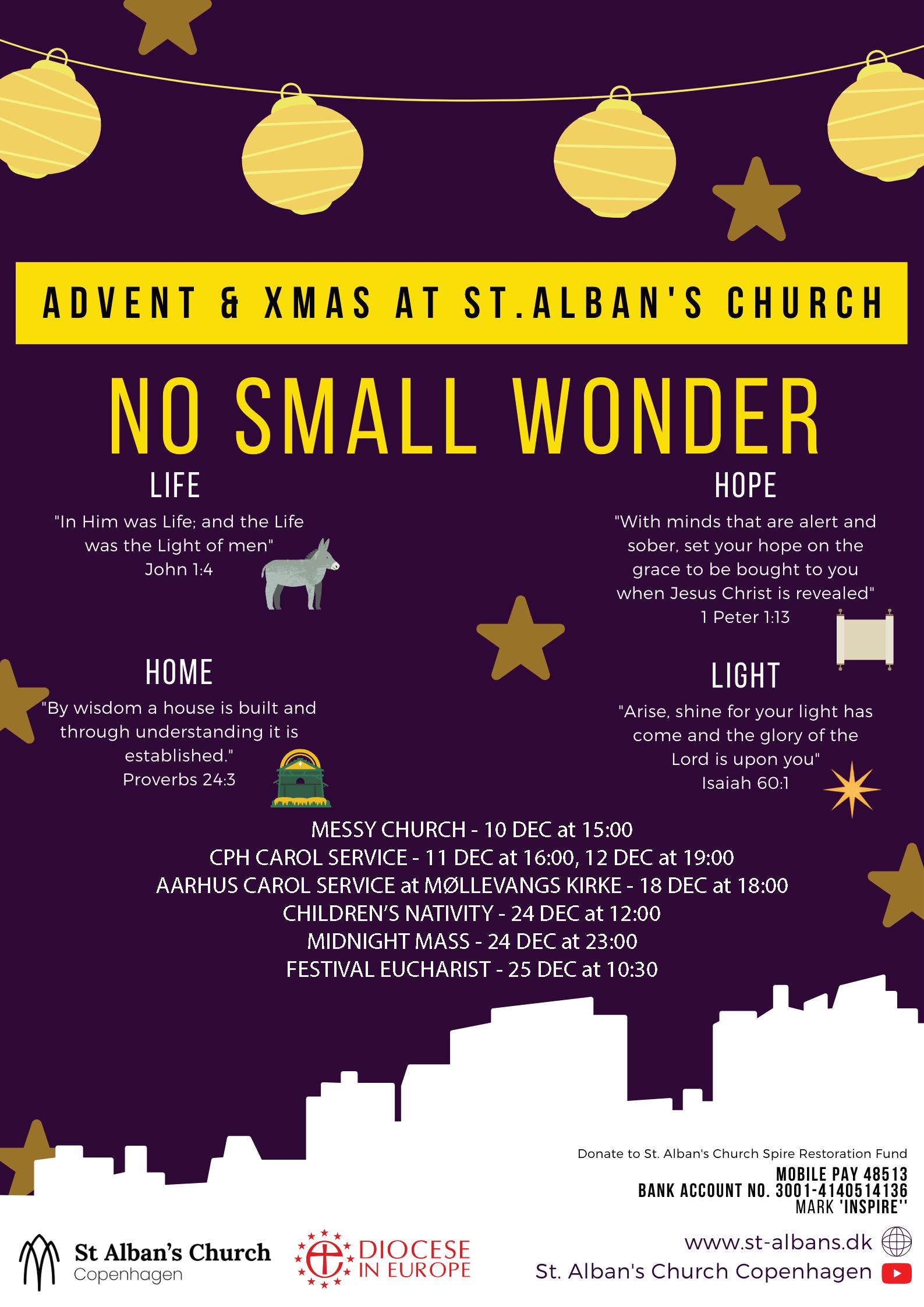
GREATEST STORY EVER TOLD
DANCING AT SPEED
Ever wondered why the Danes are so good at English, and you’re so bad at their language?
Ask yourself: how many Danish versions are there of Anglophone classic novels, films or songs? Not many, right! If the Danes like it, they’ll enjoy the original with subtitles, not dub it like in southern Europe. Or they’ll craft something completely unique.
Take ‘Happy Birthday’. There are Albanian, Armenian, Bulgarian and Croatian versions – and that’s just up to ‘D’ in Europe.
But there’s no Danish version! The Danes have their own songs: brilliantly inventive, much longer and far jollier. And sometimes they sing Happy Birthday as well – in English.
A STORY WE ALL KNOW
So we’re agreed that Danes are good at English because they get to practise it enjoying Anglophone songs (increasingly rap, let’s face it) and films.
If only there was a story in Danish that we were already familiar with in English. No, it’s not ‘Out of Africa’ … some have even said it’s the greatest story ever told. Harry Potter, Luke Skywalker, Neo off ‘The Matrix’ are all based on it!
Yes, it’s the story of Jesus Christ, and this is the story of how going to a Danish church could dramatically help you improve your English.
After all, as was demonstrated at Pentecost, foeign tongues needn’t be an obstacle for kindred spirits with a shared cultural heritage and traditions.
UNIQUE XMAS SONGS
Not only do the Danes have unique birthday songs, but the same is true of Christmas.
Granted there are a few foreign language classics that have made the grade, such as ‘Away in a Manger’ (US), ‘O come all ye faithful’ (disputed origins), ‘Jingle Bells’ (US) and ‘Stille Nacht’ (Germany), but not that many. But don’t let that stump you, as some of the Danish songs are really, really good – and also useful if you want to enjoy dancing around the Christmas tree.

To get the party going, let’s start with the 18th century Swedish ditty ‘Nu er det Jul igen’ (now it is Christmas again).
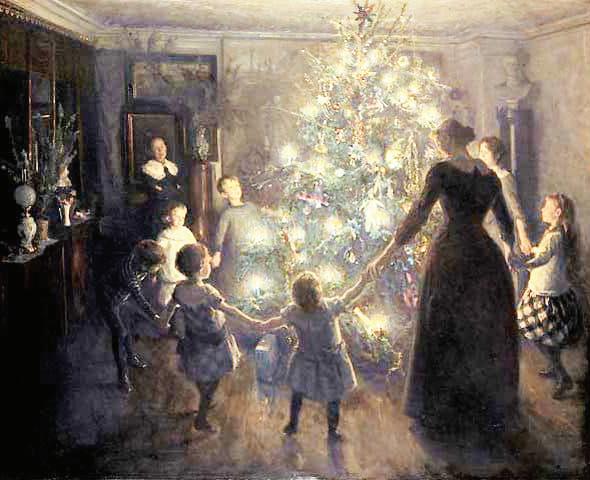
Undoubtedly the most energetic choice for dancing around the Christmas tree, it’s a cue to tour the rest of the house at high speed, over beds and as fast as possible, singing on repeat.
If that sounds like hard work, learning it is easy: “Nu’ det jul igen, og nu’ det jul igen, og julen varer li’ til påske / Nej det’ ikke sandt, nej det’ ikke sandt, for ind imellem kommer fasten” simply translates as “Now, it’s Xmas again (twice) and Xmas lasts until Easter / No, it’s not true (twice), because in between comes Lent.”
Repeat after me: Now I know a Danish Christmas song.
DEEPLY HUMOROUS
Equally catchy is ‘På loftet sidder nissen med sin julegrød’ (In the attic, the elf is sitting with his Christmas porridge), which starts off slowly with the title line and then really catches fire mid-verse with a group of rats envious of the Christmas feast.
It’s a deeply humorous take on what might be happening above the beams and below the floorboards of a typical Danish abode.
CHRISTMAS 2022 GUIDE 4 CHRISTMAS IN DENMARK
Why listening to it in Danish could improve your understanding
Viggo Johansen’s painting ‘Glade Jul’ from 1891 perfectly embodies the Danish Christmas
Also with its eyes on the ceiling is ‘Højt fra træets grønne top’ (‘high up on the Christmas tree’), which looks at Christmas through the eyes of a small child, all huge and novel.
Again very witty, and a little philosophical, the final verse is told from the perspective of a parent who tells the kids: “Nu er jeg blevet træt” (I’m knackered now) and finally “Julen varer længe, koster mange penge” (Christmas joys are many, costs a pretty penny).
PIERCING AND SOULFUL
Bridging the gap between Christmas songs and carols is ‘Dejlig er den himmel blå’. An early work by NFS Grundtvig, who based the carol on the nativity story in the Gospel of Matthew, the music followed in 1840. It’s been a favourite in church pews and around the tree ever since.
You’ll probably only hear ‘Dejlig er jorden’, written by BS Ingemann in 1850, in church, though. Piercingly beautiful, once heard it isn’t forgotten. For many Danes, it is such a nostalgic and meaningful carol that it’s often sung for funerals, as well as at Christmas.
Sprinkled with a generous number of Hallelujas, ‘Et barn er født i Bethlehem’ is another favourite with congregations across Denmark.
HALLELUJAH TO THAT ‘Hallelujah’ also features heavily in ‘Handel’s Messiah’, which has over the last century become a mainstay of the Danish Christmas.
The oratorio regales the story of Christ’s birth, crucifixion, resurrection, ascension, and return. And the Danes keep on returning to church every year to hear it.
It was said that King George II of Britain was so impressed by the music that he stood up to show his appreciation during the famous ‘Hallelujah’ chorus, thus starting a tradition that is still followed today.
CONCERTS AT THE CHURCHES
But really, ‘Handel’s Messiah’ is just the tip of the iceberg concerning concerts in Copenhagen over Christmas and the New Year. Clearly singing plays a huge part in the festive experience here.
Gospel music, classic Christmas music, other classical music and even the odd Disney song will be played at multiple venues across the capital in December.
And it is no surprise to note that the absolute majority will be held in churches. They have a track record of delivering – spiritually, acoustically, capacity-wise and on price too!
THE CROWN OF CANDLES
Another fabulous Christmas tradition that has been catching on fast in Denmark of late is observed on Luciadag on December 13.
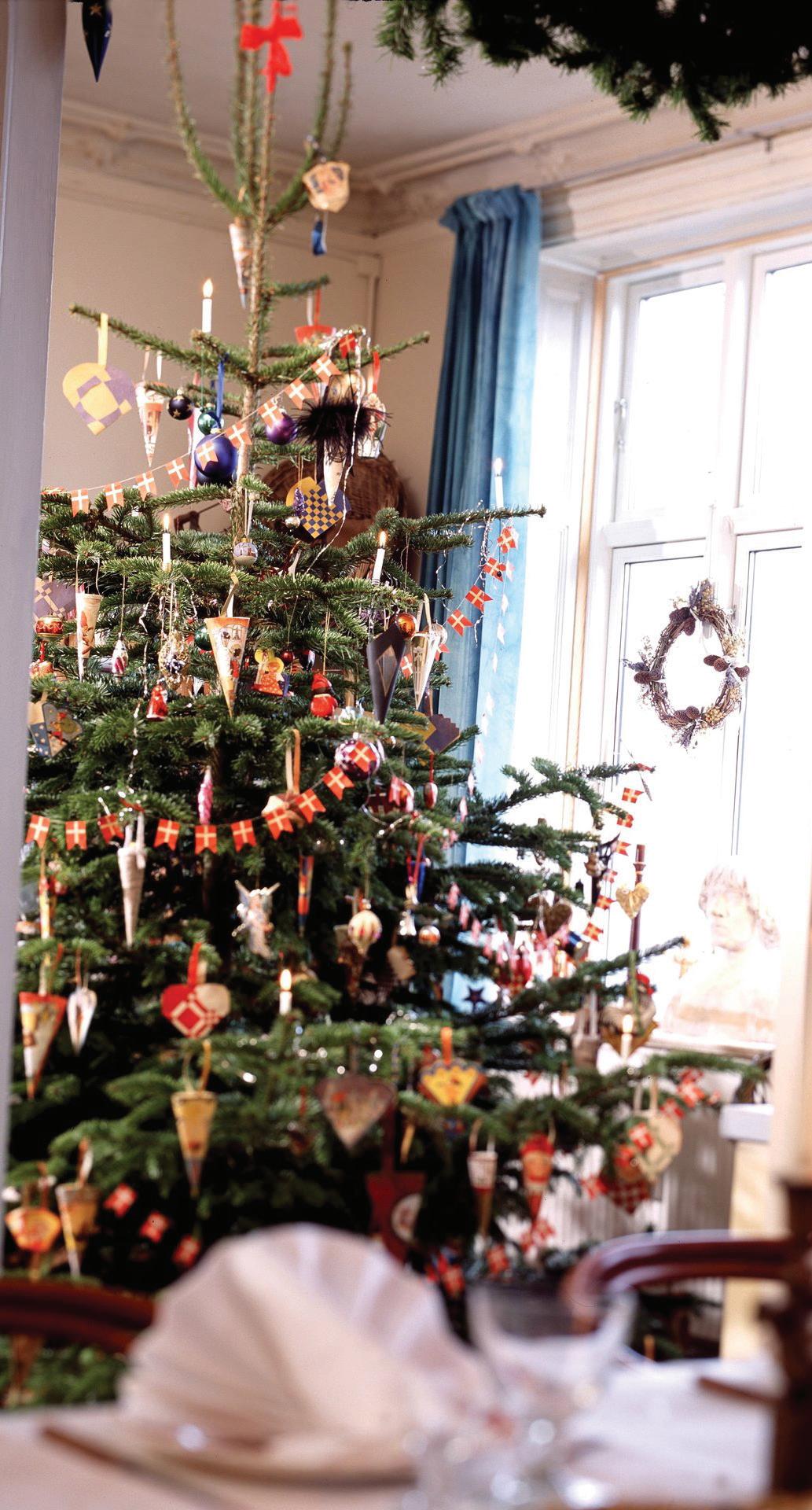

You might have seen a procession at your child’s school. Bearing candles, all dressed in white, the participants sing the saint’s song, which once heard stays with you until next year.
Celebrated annually in Sweden since 1927, and in Denmark since 1944, the head of the procession wears a crown of candles. If you have the chance to witness the procession in a church, don’t miss the opportunity.
CRAZY TO MISS THIS!
Two versions of ‘The Nutcracker’ are playing almost every day until Christmas: at Gamle Scene, the home of Danish ballet, until December 21 and at Tivoli – a version where the action is set at the themepark one Christmas night in 1874 (its famous former artistic director, Bernhard Olsen, is a character!) – until December 23.
The latter comes with the bonus that Queen Margrethe has designed most of the costumes and sets for it.
But if it is British-style panto you’re craving, try the Crazy Christmas Cabaret, also at Tivoli. This year their show, ‘Who killed Don Calzone’, which runs until January 15, is set in Miami – just the ticket for warming up for Christmas!
CHRISTMAS 2022 GUIDE 5 CHRISTMAS IN DENMARK
Publisher: CPH POST • Editor: Hans Hermansen • Info: hans@cphpost.dk
• Tel: +45 2420 2411
VISIT DENMARK/ KRISTIAN KROGH
BEHIND THE FESTIVE TRADITIONS
The Vikings first encountered Christianity in the 8th and 9th centuries with the arrival of foreign monks and the increase in foreign trade. The first Danish king to convert to Christianity, Harold Blåtand (Harald Bluetooth), was baptised in around 965.
Despite pressure from the church to call Christmas ´Kristmesse´, the Danes kept the term ‘Jul’ – a variation on the name of the historical festival Yule.
It means wheel, and it’s no exaggeration to say that a wheely good time is had by all in Denmark at Christmas time.
CANDLES AND CHOCOLATE
Despite the fondness for cinnamon and cloves, Christmas is all about the sweetness! Bakeries and shops will stock special sweets and cakes in the weeks leading up to Christmas and often create elaborate window displays to showcase their skills.
Treats enjoyed throughout Denmark include the deep-fried lemony klejner (see page 8), nutty gingerbread brunkager and tiny spiced biscuits called pebernødder.
And let’s not forget the æbleskiver (mini doughnut-

shaped pancakes) and gløgg (mulled wine fl avoured with dried fruits, nuts and Xmas spices), which is served at every festive market, along with roasted almonds.
Kids, meanwhile, are placated until the arrival of Julemanden (Father Christmas) with chocolate in their Advent calendars, although the julekalenderen tradition (see factbox) goes way beyond this, with some calendars bestowing gifts on every Sunday of Advent, and others every single day!
During Advent, Denmark’s love of candles takes on an even bigger dimension, as each house has a special candle with the days until Christmas marked on it. The candle is duly lit each day to burn it down to the next day’s date.
Alternatively, advent wreaths composed of evergreen twigs and ribbons hold four candles – and one is lit on each of the four Sundays preceding Christmas.
KEEP
THE NISSER NICE!
Now your candles are lit, you can decorate. Like in most Christian countries, the tree ends up being the main focus (see page 8), although it won’t be completed until Christmas Eve. This leaves the door open for the festive period’s designated interlopers: the ‘nisser’.
You might assume these bearded elves, dressed in grey trousers and red hats, are Julemanden’s little helpers,

but the tradition goes back much, much further.
Children often leave out bowls of risengrød for them, the sweet rice pudding eaten throughout Jul, and this stems from a tradition established shortly after the arrival of Christianity when it was believed ‘gårdboer’ lived in the lofts of houses or barns to protect the ‘gård’ (farm).
These ‘gårdboer’ demanded offerings in order to ensure a good crop. Failure to do so could result in pranks or worse. In fact, nisser were often blamed for the death of livestock and spoiling of food stores.
One of the etymological origins of the word ‘nisser’ may be from the old Norse word for ‘infection’. More likely, though, it is a nickname derived from Niels!
To whet your children’s appetite this year, why not visit Nisseland, which was established near Kalundborg in the most western part of Zealand in 2002. The 1,500 sqm venue includes the world’s largest mechanical nisser display.
STEMS FROM HUMAN SACRIFICE
Also derived from paganism are the traditions of the Julebuk and Yule Boar Loaf. Originally they were sacrifices made to assure a good harvest (so important that humans were often slain), but they switched from animals to inanimate objects following the arrival of Christianity: most typically a straw doll.
CHRISTMAS 2022 GUIDE 6 DANISH CHRISTMAS TRADITIONS
Decoding a Christmas that established its roots long before the arrival of Christianity
This corn dolly/corn mother would sit on tables throughout Yuletide before being burned on Christmas Eve, thereby purifying the house.
In modern times, the descendant of the corn dolly in Denmark is the ‘Julebuk’ (barley goat). Today it survives the furnace and returns to the box of Christmas decorations. Some are purchased as a tourist curio and then no doubt mistaken for Spanish donkeys.
Another corn-related tradition that evolved from the sacrifice was the baking of a boar-shaped loaf using the last sheaf of grain harvested in the year: the Yule Boar Loaf.
Often it was kept until sowing time in the spring, when part of it was mixed with the seed grain and part given to the ploughman and the plough horses or plough oxen in expectation of a good harvest.
THE LONG LUNCH
A good spread is always expected at the Julefrokost.
Often arranged within friend groups and sporting circles, the most popular kind is the offi ce Julefrokost, where the feasting often starts just after lunch and continues all day.
Typical starters include pickled herrings, gravadlax and breaded fish fillets served with mayonnaise, prawns and eggs – all served on rye bread.
For the main, flæskesteg (roast pork and crackling) with red cabbage is the most common option, and for dessert the aforementioned risengrød, which can be jazzed up into a ris a l’amande.
All of this is washed down by julebryg, the Christmas beer traditionally launched on J Dag on the first Friday of November that is much stronger than your average beer, and the constant downing of schnapps – it’s rude to turn down a toast, after all!
Aalborg Akvavit’s limited Jule edition bottles are individually numbered and changed in design every year. Collectors around the world try and secure one of each design – although the contents are just as appealing as the bottle itself.
And don’t forget Pakkeleg, the dice game that never gets old. Everyone reveals a wrapped present, and then participants take turns in rolling a dice. A six wins you a present, but once all of them are claimed, the rules permit another five minutes during which you are allowed to pick any you should desire. It’s basically an excuse to be horrid for a while!
THE TV MARATHON Kids, meanwhile, are kept entertained by the Julekalender TV show. The first, ‘Historier fra Hele Verden’ (stories from around the world), was broadcast by DR in 1962. Sweden had launched a similar show in 1960.
Audiences started to catch on in 1967 with ‘Kender du Decembervej?’ and its hugely popular central character, a happy mouse called Magnus Tagmus, who returned in a sequel the following year. By 1971, the program was in colour and pencilled into the nation’s must-watch schedule. The first complementary advent calendar came out in 1977.
Since 1990, DR and TV2 have been taking it in turns to produce a new one – the same year the latter released the first one aimed at adults. Every year, up to ten repeats are shown.
The most popular character is probably Pyrus, who first made an appearance in 1994 and has even had his own feature film. But his popularity has never taken off beyond Scandinavia. In contrast, the 2003 edition ‘Jesus & Josefine’ ended up being shown in 20 different countries.
Even worse for Pyrus, TV2 has decided to never show ‘Alletiders Juleman’ again because it contains scenes which “may be offensive to some”. Allegations that it’s racist towards Chinese people and includes backfacing have been rubbished by Pyrus universe creator Martin Miehe-Renard.
THE BIG DAY ITSELF
After such a huge build-up, you’d imagine Danes would want a quiet Christmas, but no. Christmas itself is a multi-day affair.

And then Christmas Eve starts with a trip to church, often followed by a fulsome walk to work up an appetite for the feasting ahead.
Upon their return, the family finishes decorating the tree and settles down to watch the Christmas Disney show and various TV julekalenders, while the designated chefs do their magic.
Traditionally on Christmas Eve, roast duck, pork or goose takes centre stage and is served with caramelised potatoes, braised red cabbage and a variety of pickled side dishes.
This is followed by ris a l’amande (see page 8) – a mix of sweet rice pudding, whipped cream and crushed almonds. It’s often served with a sauce made from winter berries, sometimes collected by children whilst out walking. A whole almond is hidden in the pudding, and the person who finds it wins the mandelgave – a gift purchased for the occasion.
THE FIVE CALENDARS OF XMAS
Julekalender – the general term for a Christmas calendar; normally contains chocolates
Pakkekalender – contains a wrapped gift for every day of December until Christmas
Adventkalender – contains a gift for each of the four Sundays leading up to Christmas

TV-Julekalender – a TV show broadcast every day of December until Christmas
Calendar Candle – a candle marked with 24 increments
Following the Christmas dinner, everyone holds hands and dances around the tree singing traditional songs (see page 8).
The 25th and 26th are quiet days spent at home with more food, friends and family, recovering from the excesses of the previous days and looking forward to the party starting again at New Year.
CHRISTMAS 2022 GUIDE 7 DANISH CHRISTMAS TRADITIONS
VISIT DENMARK/ DANIEL BRANDT ANDERSEN
Star Candles/candleholders
Fairylights
Bramming Nisse cutouts
String Raisins, dried fruits, nuts etc
1. If you’re opting for fairylights, hang them on the tree first to avoid displacing your carefully hung decorations later.
2. Decorate with ‘kravlenisser’ (‘climbing nisser’) paper cutouts (drawn by Frederik Bramming in 1947 and are still popular today) and plaited hearts and stars folded from four long strips of paper

3. Traditional edible decorations include gingerbread, marzipan, caramels, apples, figs, dates, raisins and nuts. These can be tucked into paper decorations or hung with string.

4. Time for the crowning glory. Most households opt for a star in reference to the star of Bethlehem. The star is the final touch, unless you’re using live candles.
5. Lighting candles on the tree is one of the standout idiosyncrasies of the season. Do it last to avoid turning your tree into a burning bush.

Coloured paper (two colours works best)
Scissors
Optional: glue & glitter
Optional: crayons & paint
1. Cut two paper ovals, each with two incisions as shown
2. Fold the ovals in half
3. Align each half as shown
4. Weave the top left strip acoss the body of the right heart
5. Pull the sides together to make a heart shape
6. Weave the top right strip across the body of the left heart, over and under the opposing strips
7. Follow suit with the next two strips
8. Tuck the final left strip over and under, threading it through the bottom strip of the right side
9. At the bottom, insert the end of the left strip into the right
10. Voila
Klejner Biscuits
1 egg 60g sugar
1 lemon
70g melted butter
1 teaspoon cardamom
1 teaspoon baking powder 225g wheatflour
75g cream
Palmin for frying
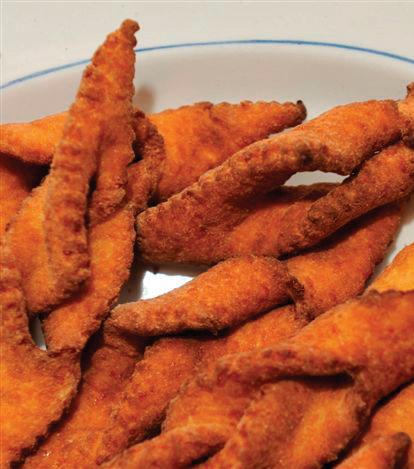
1. Whisk together eggs and sugar in a bowl
2. Peel the lemon, avoid the bitter white pith. Stir the peel into the sugar and egg mix with a mixing spoon.
3. Stir in the melted butter. Add cardamom and baking powder before gradually stirring in sieved wheat flour.
4. Finally, add cream and knead Refrigerate the dough for 24 hours. Roll out the dough with a rolling pin to a thickness of around half a cm.
5. Now cut the dough into rectangular panes – easily done by scoring with a pizza cutter. Make a diagonal cut in the middle of each rectangle from one corner to the opposite, being careful not to cut right to the edge. Pull one of the corners through the hole to make the classic klejner shape.
6. Melt the Palmin in a saucepan and cook the klejner at 170-180 degrees C for 2 minutes each side, until golden and crispy.
Tip: You can freeze the klejner dough, uncooked, after shaping. When you want to cook them, simply cook in hot Palmin as directed – no need to defrost.
Serves 4
65g porridge rice (grødris)
500ml milk
Seeds from ½ vanilla pod
150g blanched almonds, chopped
1 tablespoon sugar
Dash of dry marsala sherry
300ml whipping cream (piskefløde, 38%)
1. Cook pudding rice, milk and vanilla slowly, stirring frequently
2. Remove from heat, add sugar, sherry
3. Once cool, stir in almonds Finally, whip cream and stir in
4. Serve cold with hot cherry sauce
Tip: Lightly butter the pot to prevent burning
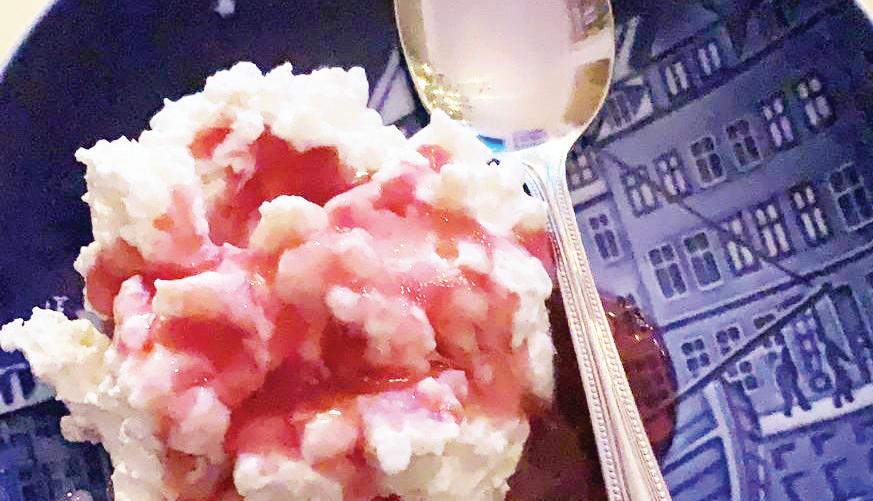
CHRISTMAS 2022 GUIDE 8
Tree
A Danish Xmas
Ris à l’amande
A Danish Xmas Heart
HOW TO MAKE ...














